I have performed calibrations to different manufacturing industries and I can say that temperature is one of the most measured parameters. Temperature calibration is always performed and having the knowledge to do the calibration in this field is a good asset.
If there is a vast number of measuring instruments under temperature, maybe it is time to introduce and establish an Internal Calibration or In-house calibration laboratory to calibrate them. This will save you more time and money in the long run.
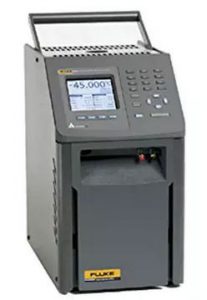
In this article, I will share to you a very useful reference standard for temperature calibration that can be used during in-house calibration, the Metrology Well, also known as a dry well or dry block. I will present how to use a metrology well during calibration.
.
What is a Metrology Well?
There are many reference standard used for temperature calibration requiring actual temperature like for example the freezing or boiling point of water (and other liquids). This is an actual temperature where we can use as a reference point to calibrate our temperature measuring instrument like a Digital Thermometer.
Most temperature Instruments can be calibrated through simulation using a Process Calibrator where an electrical signal (like voltage or resistance) is used to simulate a certain temperature. But what if the requirement is an actual temperature or the instrument is not capable for electrical signal simulation?
A metrology well is a device designed to generate an actual temperature using a specially designed temperature controller with reference sensor. It is a temperature bath in a heated metal block with a metal insert for probes and sensors.
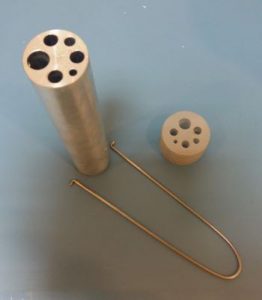
A metrology well is also known as Temperature Calibration bath, it can be a wet bath, using a liquid as a medium for temperature transfer. and a dry bath, using a metal block with a metal insert to transfer the generated temperature. In this post, we will only concentrate on the dry bath or dry well or dry block (whew, so many terms).
Overview of a Metrology well
In this article, we will use the metrology well from Fluke, which is the Fluke 9170 and Fluke 9173. A high temp and low temp metrology well. Most Metrology Well has the same principle of operation so this can be applied to other types or models.
The Fluke 9170 can generate temperature ranging from -45 to 140 deg C where the Fluke 9173 can generate heat ranging from 50 to 700 deg C. It has a built in fan to help distribute heat evenly. Since actual temperature or heat is generated, proper safety should be observed.
Both provides a very stable reading ranging from 0.0005 For Fluke 9170 and 0.01 to 0.05 for Fluke 9173. Stability means that the fluctuations are within the specified stability value. Highly stable readings provide better repeatability thus resulted to more accurate results.
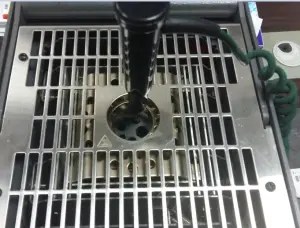
The metrology well has a metal block with insert metal used for a majority of temperature measuring instruments with probes, such as digital thermometers with thermocouple or rtd probes, a dial thermometer, and thermocouple sensors.
The Metrology well is easy to operate, once powered on, have it to stabilize for at least 30 mins to 2 hours before use (depending on how many hours it is being idle or unused), then set the required temperature and ready to use. You can also program it to automatically follow a desired temperature set points.
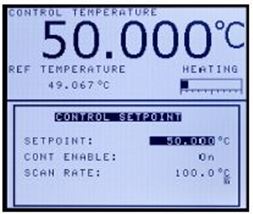
A metrology well is portable thus the term Field metrology well is used. You can carry it and used where the temperature sensors are installed and calibrated it on site.
Things to consider when using the Fluke Metrology well
Selection of Proper insert size ( or hole)
Inserts have different holes in it for probes or sensors to fit in. Choose the one where exact fit is possible to maximize heat transfer or conduction. But ensure that there is enough space for metal expansion, not too wide ( creates poor conduction) and not too snug ( or you may stuck your sensor inside).
Proper immersion
Inserting the sensors into the holes is not only in the right fit but should be in the right immersion depth. Immersion technique are mostly applicable to those probes or sensors that are mostly exposed like the sensors of the dial thermometers and PRT (Platinum Resistance Thermometers).
Proper immersion means that the sensor body are inserted where it is touching (or nearly touching) the bottom of the heated metal block.
There is what we call partial immersion where the sensor is partially dipped. The sensor is too far from the bottom or surface of the metal block. Note that the farther the sensor from the metal block, the higher is the error. One way to solve this is by calibrating the Metrology well with the same immersion depth with the sensor to be calibrated and used the result as the reference value.
Use the provided Test Insert Insulator (for Cold Temperature Only) to avoid moisture and ice build up. Also to ensure that you can attain a more accurate result.
Stabilization time

There is a stabilization time before use and stabilization time when taking a reading. Proper stabilization time should be observed during taking a reading or when setting a set point to allow proper time for the temperature to be uniformly distributed and absorbed. 15 min is the recommended.
Good Standing Ground
Make sure to place the metrology well on a stable ground with sufficient spacing on its surroundings.Free from vibrations, moist, dirt, and other heat sources. This will provide a smooth operation and proper functionality. Also avoid a place where there is a strong wind or moving air to prevent the surrounding temperature affect the readings from the well.
Always use the Well on its vertical position to ensure safety. The risk of burn may result when used in other orientation.
Instruments that you can Calibrate using a Metrology Well
The calibration procedure for below instruments are almost the same, once the sensors or probes are inserted on the Metrology Well, we will compare the display of the sensors ( whether a temperature controller or a simple temperature indicator) to the display of the Metrology Well.
- Thermocouple wire
Thermocouple wires can be calibrated with the temperature indicator or controller. Just soak the thermocouple sensor to the right insert holes. See to it that it touches the bottom of the heating block. Click this link for Thermocouple wire calibration procedure.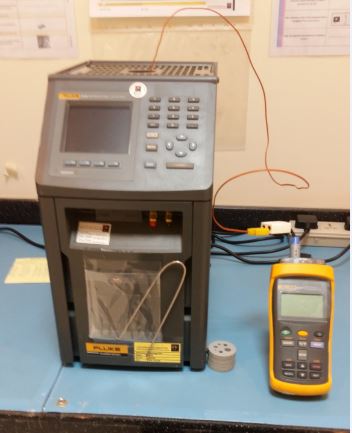
Thermocouple Sensor with display calibration - RTD sensor
Most RTD are calibrated using a metrology well because of their design. Unlike thermocouples where you can slice and separate the wire for simulation. Proper Immersion and insulation should be observed during the calibration process. RTDs area mostly installed in machines so a loop calibration is usually the case.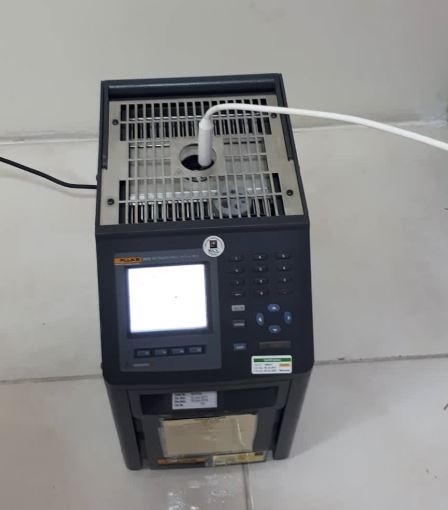
RTD sensor calibration
. - Digital thermometer
Using metrology Well for digital thermometers are very simple to do. It is dependent on its sensor whether an RTD or a thermocouple. Visit this link for Digital Thermometer Calibration. procedure.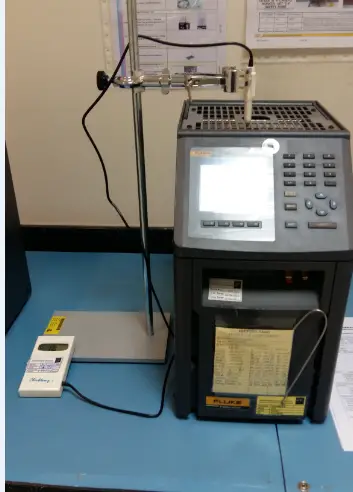
Calibration Set up of Digital Thermometer Using Metrology Well - Temperature controller.
Same procedure with the digital thermometer applies here. Visit this link for Temperature controller calibration procedure

Temperature Controller Calibration - Dial thermometer
A metrology well is one of the best equipment for calibrating a dial thermometer. Just directly insert the stem of the thermometer to get a reading. Click here to view Dial thermometer calibration procedure
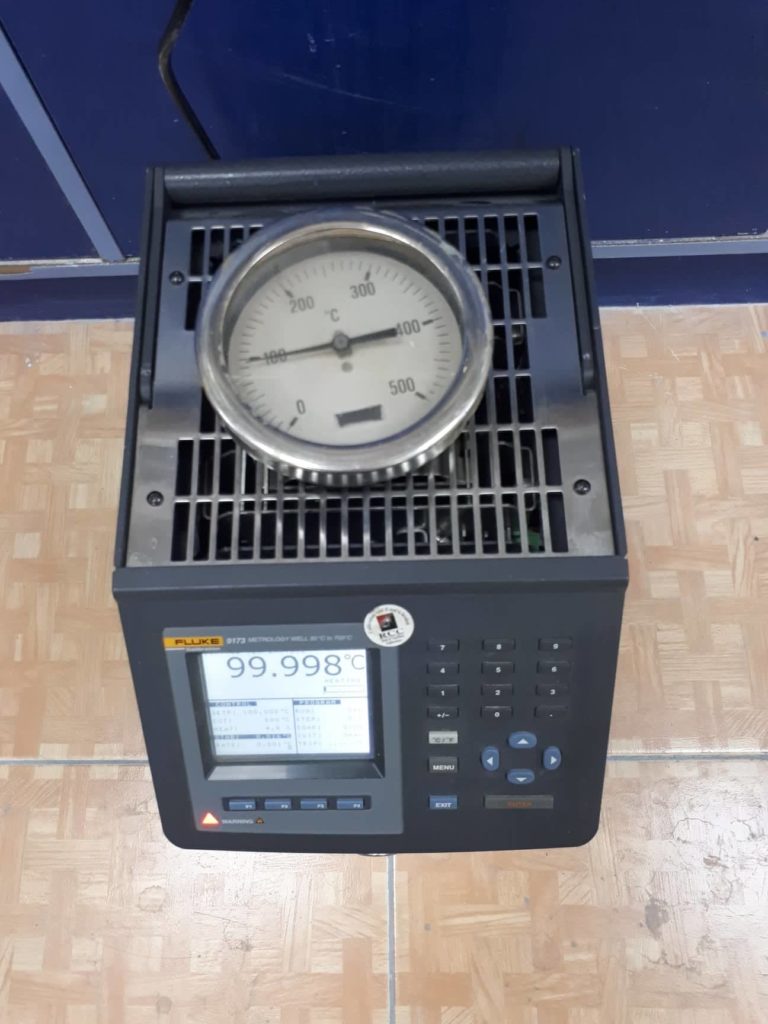
Dial Thermometer Calibration - Temperature transmitter
The initialset up for calibrating a Temperature Transmitter with a built in sensor or stem is the same as the dial thermometer. Except that the display is digital and sometimes located in the different area (in a PLC).
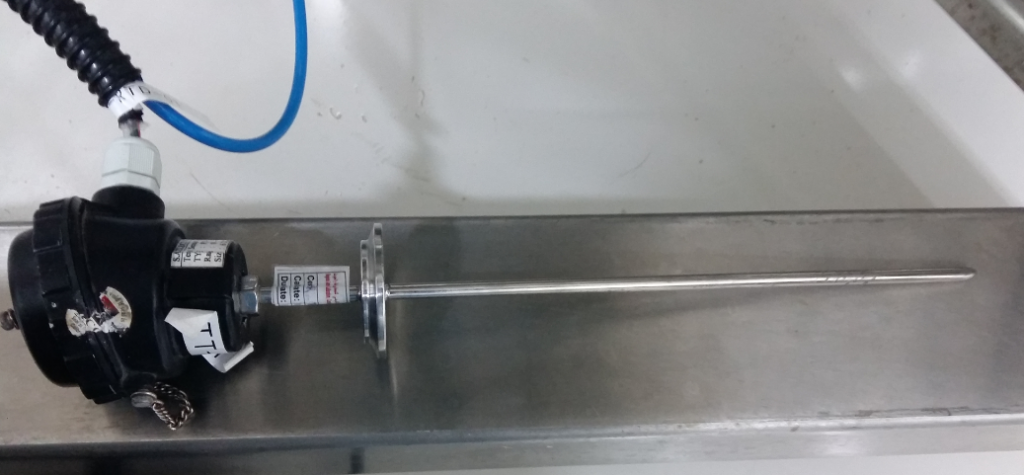
Visit the link below to learn more about the calibration setups and procedures for temperature transmitters…
>> https://calibrationawareness.com/5-useful-setups-on-how-to-calibrate-a-temperature-transmitter
Conclusion
In this article, we have discussed what is a metrology well and how to use it as a calibration standard for in-house temperature calibration. I presented the capability of a Metrology Well to calibrate a thermocouple wire, RTD, digital thermometer, temperature controller, dial thermometer and temperature transmitter.
We can see that it is a best reference standard for most of our temperature sensors and probes. Also a suitable temperature standard to use during onsite or field calibration.
Thank you for visiting my site, please leave a comment and subscribe
Click this link to check the metrology well at AMAZON: Fluke Calibration 9173-F-156 Series 9173 Metrology Well Calibrator
2 Responses
Jonathan Apperley
Great post! Don’t see many people using a metrology well for temperature calibration these days.
edsponce
Hi Jonathan,
Is that so, but I believe it is still the best standard for calibrating thermometers with temperature probes. Is there the latest technology used for temperature calibration?
Thanks for reading my post.
Edwin